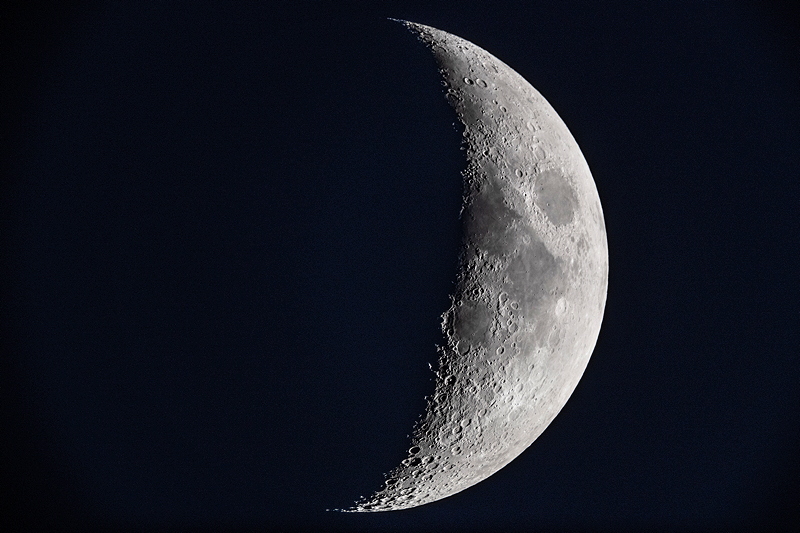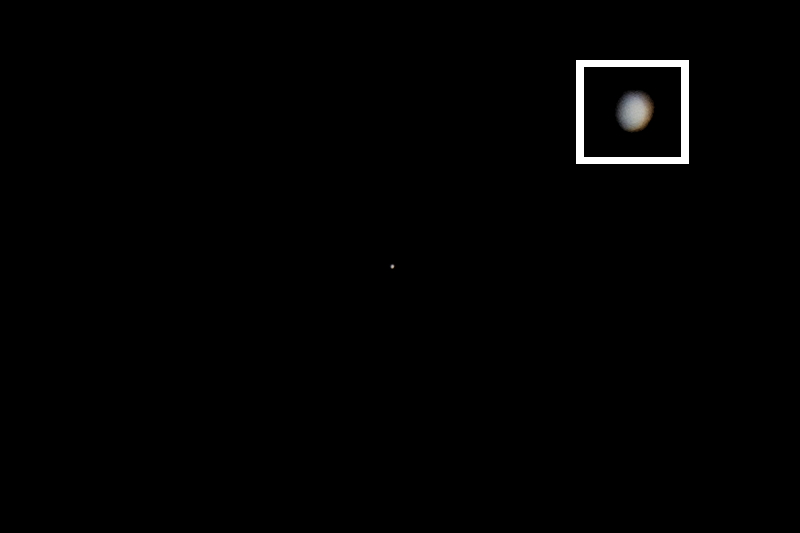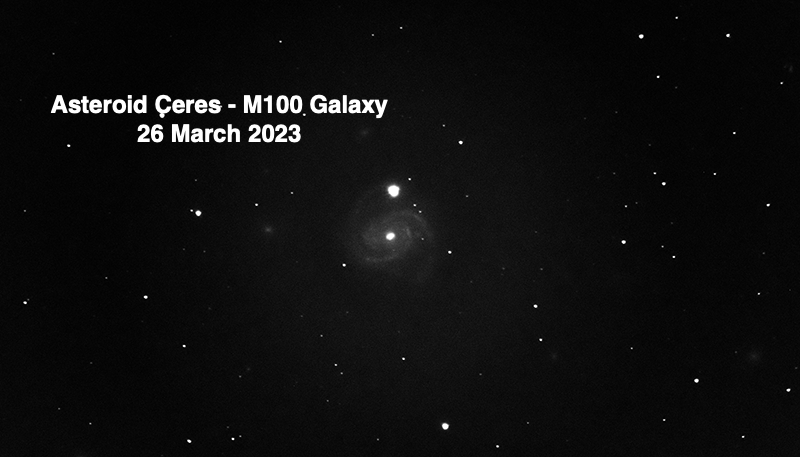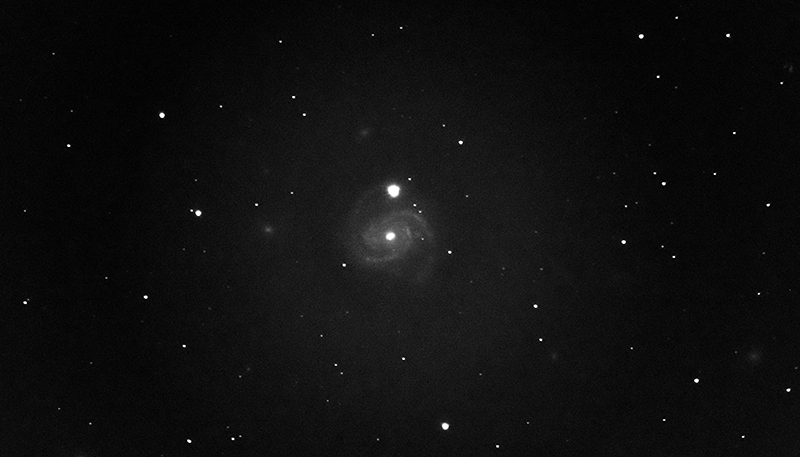Asteroid 1 Ceres & M100 Galaxy conjunction
Posted: 27 March 2023
|
Open: Sunday, 26 March 2023, 1830 MST Temperature: 50°F |
Session: 1845 Conditions: Mostly clear, breezy |
Equipment:
12" f/8 LX600 w/StarLock
2" 24mm UWA eyepiece
1.25" 26mm eyepiece
Camera:
D850 DSLR
SYNCed observatory clock and D850 DSLR to WWV time signals.
1839 MST: LX600 ON, StarLock OFF, High Precision OFF.
1842 MST: Sunset.
Viewed gibbous Venus, 102X and 94X. Viewed the crescent Moon, 94X.
Mounted the D850 DSLR at prime focus. Focused using the Moon and locked the 12" primary mirror. Took this image of the Moon (1/320sec, ISO 400, White Balance Auto).

Then took this image of Venus (1/3200sec, ISO 100, WB Auto). The full frame image shows how small Venus was at prime focus; the inset magnified view shows the gibbous phase.

1907 MST: Calm now.
1913 MST: High Precision ON.
Slewed to M100 (galaxy), very low in the eastern sky. The galaxy was not yet visible in the bright twilight sky, but Asteroid 1 Ceres was easily seen, 94X.
1934 MST: M100 (galaxy) now faintly visible, 94X.
Mounted the D850 DSLR at prime focus, focused on the star Denebola, and locked the mirror. Slewed to M100.
1952 MST: StarLock ON.
Did two test exposures. Ceres was Magnitude +6.9 at a distance of about 149,000,000 miles. The galaxy is Magnitude +9.3 at a distance of about 323,000,000,000,000 miles. The light from the galaxy took 55,000,000 years to reach my telescope. The light from Ceres took just 13 minutes to reach my telescope. Ceres was nine times brighter than the galaxy, hence it is overexposed in the following StarLock autoguided images taken with 1 minute exposures, ISO 2000. The animation shows the movement of the asteroid at 30 minute intervals over a one-hour period.


2102 MST: StarLock OFF, High Precision OFF.
Viewed Ceres and M100 (galaxy), 102X.
2109 MST: LX600 OFF.
|
Close: Sunday, 26 March 2023, 2116 MST Temperature: 45°F |
Session Length: 2h 46m Conditions: Mostly clear |
Comments are welcome using Email. Twitter users can use the button below to tweet this report to their followers. Thanks.
Cassiopeia Observatory Home Page
Copyright ©2023 Michael L. Weasner / mweasner@mac.com. Email Etiquette.
URL = http://www.weasner.com/co/Reports/2023/03/27/index.html
